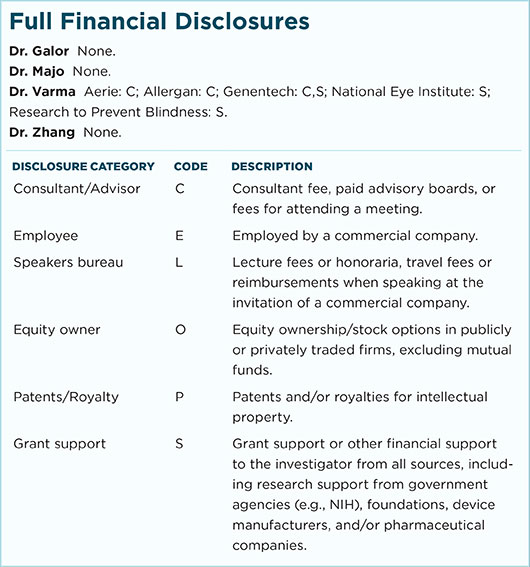Download PDF
Herpes zoster ophthalmicus (HZO) may not be the monophasic illness that ophthalmologists learned about in medical school. A hospital-based epidemiology study supports more recent data showing that recurrent and chronic HZO are much more common than previously thought.1
Study details. The researchers performed a retrospective medical record review of data in the Broward and Miami Veterans Affairs Healthcare System from 2010 through 2014 and studied 90 patients who had a clinically documented episode of HZO, consisting of vesicular rash and pain in the dermatome of the ophthalmic division of cranial nerve V (V1). Within that group, 62 patients had HZO with eye involvement, as diagnosed by an ophthalmologist.
Recurrence rates for HZO with either rash or eye disease were 8% at 1 year, 17% at 3 years, and 25% at 5 years. The presence of ocular hypertension or uveitis, which often occurred together, increased the risk of recurrent and chronic HZO. In addition, those with active eye disease for more than 90 days after initial presentation were more likely to experience recurrence. Immune status, gender, age, and vaccination status were not significant risk factors for recurrence or chronicity.
More questions. Although methodologies differed, the Florida study had findings similar to those of an Italian study,2 which included a population that more equally represented both sexes compared with the predominantly male VA group, said Anat Galor, MD, MSPH. “Seeing VZV as no longer a monophasic illness, however, creates more questions than it answers: Is there a role for chronic antiviral therapy similar to that used with herpes simplex virus? Would this reduce the frequency of complications? Would increased VZV vaccination after onset of HZO change the frequency of recurrence and chronic disease?”
Rethinking roles. The study was not designed to answer these questions, she said, so it is too soon to recommend changes in clinical practice. However, given the study findings, as well as the fact that 10% of patients have herpes zoster affecting the V1 distribution, she recommended that ophthalmologists play a more assertive role. “We can educate patients about the potential value of the vaccine as well as the potential risks of recurrence and chronic disease.”
This is particularly critical, she said, given the disease’s high morbidity, including the complication of postherpetic neuralgia, which is a leading cause of suicide in patients older than 70 with chronic pain.
—Annie Stuart
___________________________
1 Tran KD et al. Ophthalmology. Published online April 8, 2016. doi:10.1016/j.ophtha.2016.03.005.
2 Miserocchi E et al. Cornea. 2014;33(6):565-570.
___________________________
Relevant financial disclosures: Dr. Galor—None.
For full disclosures and disclosure key, see below.

More from this month’s News in Review